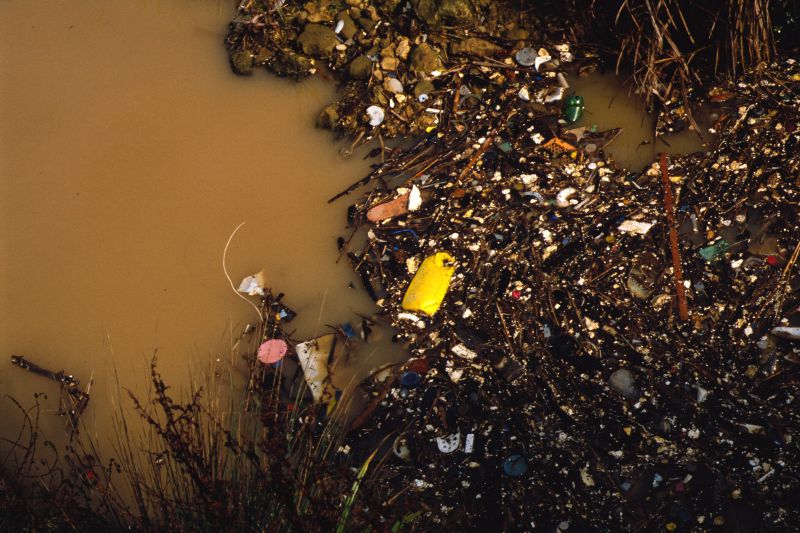Contamination of Water Pushes up Costs
Published on by Water Network Research, Official research team of The Water Network in Academic
Contamination as people and agriculture crowd around water sources has hiked the cost of water treatment by 50 percent in some major cities, making it harder to provide safe drinking water for a growing urban population
An expansion of agriculture in areas where cities get their water and growing numbers of people living around watersheds are largely responsible for the rising cost of water treatment, said the study by scientists at Yale University and other U.S.-based institutions.
 Nearly 90 percent of the world's urban watersheds face some level of degradation from agricultural chemicals and increased sediment, making water treatment more expensive, the study said.
Nearly 90 percent of the world's urban watersheds face some level of degradation from agricultural chemicals and increased sediment, making water treatment more expensive, the study said.
The world's urban population is expected to swell by 2.5 billion people by 2050, according to U.N. data. Providing affordable drinking water to this growing population will be a challenge for governments, especially in fast-growing cities across the developing world.
"We need to manage our water resources more carefully," Rob McDonald, one of the study's authors told the Thomson Reuters Foundation.
"When someone upstream decides to expand agriculture or build more houses it will have a cost (on water treatment) which is not accounted for in the market place," said McDonald, lead scientist at The Nature Conservatory, an environmental group.
One in four of the 309 cities studied has made investments to protect their watersheds such as helping farmers to reduce erosion or properly treating human waste, said McDonald.
"City leaders can use our findings to advocate for protecting their drinking water from contamination, rather than spending billions of dollars to clean it up," McDonald said.
The study is the first to analyze the economic cost of human activities on water treatment prices in cities, he said.
Source: Business Insider
Media
Taxonomy
- Water Pollution
- Water Scarcity
- Water Pollution Control
- water treatment
2 Comments
-
Sustainable industrial development to 360 degrees is described on the web site http://www.spawhe.eu but all continue to seek partial solutions.
To stop global warming and purify the environment globally are not enough specific skills. They serve global skills that bring together coherently the plants in the area and connecting them with each other. But current systems that have been designed with specific skills, not global, can not connect. Authorities and entrepreneurs of the industrialized countries pretend not to understand the global language of SPAWHE. Is not convenient for the authorities admit mistakes and entrepreneurs to change bad investments. Who have to stop global warming, if those who have a job, public or private must obey the authorities and entrepreneurs? The answer is simple: The poor, the unemployed and pensioners? It is no coincidence that the inventor of SPAWHE is one of them. Only a development model as SPAWHE, can allow countries developing making the same mistakes. But nobody does anything about it. Governments and entrepreneurs of industrial countries export wrong systems that have warmed the planet and the developing countries claim credits for CO2 emissions, because they too have the right to development. Sustainable development of SPAWHE no one wants to experience. But who loses out the most are always the poor who buy damaged goods. The sustainable desalination system described in this article is also valid as tertiary treatment system for agricultural water. But what is amazing is the fact that planning globally plants, these will produce more energy than they consume, and to purify both desalinate, both to lift and distribute the water, its simply to recycle the water in mobile systems, becoming the most powerful energy source on the planet. I seek partners to jointly develop these projects. Please see http://www.spawhe.eu/the-sustainable-future-of-environment-energy-food-and-labour/
Best Regard
-
Does anyone have knowledge as to whether the World Health Organization or the UN have set clean water standards for acceptable levels water contaminants? If so, for how many water contaminants? Most importantly, how do any of the WHO or UN clean water levels compare to those EPA has established for the US?
This week, Florida Environmental Regulation Commission approved new 'safe' water levels of contaminants - expanding from 54 to 92 contaminants to be regulated. However, the allowable level of certain contaminants was increased. The FDEP cited EPA and international standards as the scientific basis for the changes. It would be helpful to know if and where the variance in declared 'safe' levels of contaminants between the US and international sources might be. Thank you.
2 Comment replies
-
Thanks Mark
-
I'm not sure about the WHO or UN, but in Europe the European Commission has set "Environmental Quality Standards" for 33 priority pollutants with a proposal in play to increase this to 48 ( http://ec.europa.eu/environment/water/water-dangersub/pri_substances.htm ). I don't know how these compare to EPA "safe" levels.
-